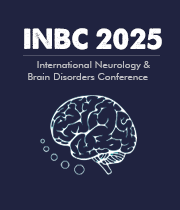Title : 3D 7Li magnetic resonance imaging analysis in patients with bipolar disorder
Abstract:
Background: Lithium (7 Li) is an effective first-line treatment for bipolar disorder but is underutilized in clinical practice due to concern over side effects and difficulties in predicting response among patients. Although novel multinuclear MRI has demonstrated a heterogeneous distribution of lithium, robust determination of its anatomical distribution presents a computational challenge, especially in subjects with low lithium concentrations.
Aims: (i) Devise and compare methods for measuring brain lithium signal intensity and variability using unmodified 7 Li-MRI data. (ii) Investigate the relationship between brain lithium signal intensity and variability, serum Li levels and clinical characteristics using the appropriate method.
Methods: Euthymic bipolar patients (n = 26) on long-term lithium treatment underwent 7 Li-MRI using a balanced steady-state free precession gradient echo sequence (15×15×25 mm3 voxel). Brain 7 Li-MRI signal intensity and signal-to-noise ratio (SNR) were determined based on a region of interest approach comparing manual annotation and thresholding methods. Mean brain Li signal intensity and coefficient of variation (COV) were calculated and relationships between clinical variables were investigated.
Results: Threshold analysis (SNR= 6.27 + 0.7) demonstrated brain rain 7 Li signal heterogeneity (signal intensity = 64374.68 + 6201.01; COV= 20.5 ± 4.29%) between subjects. Mean brain 7 Li signal strongly correlated with serum lithium concentration (r = 0.79; p<0.001) but not with dose (r = 0.27; p = 0.28), lithium-related side effects (r = -0.13; p = 0.56) or mood rating scales in this euthymic cohort.
Conclusion: Analysis of unmodified 7 Li-MRI data indicates a clear relationship between brain and serum lithium levels, providing a strong foundation for evaluating interpolation and data normalization based sophisticated analysis in the future.



